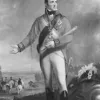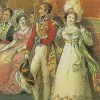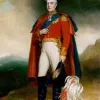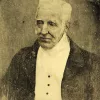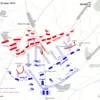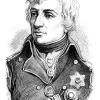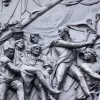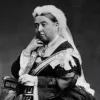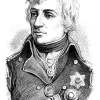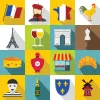Important update from TheSchoolRun
For the past 13 years, TheSchoolRun has been run by a small team of mums working from home, dedicated to providing quality educational resources to primary school parents. Unfortunately, rising supplier costs and falling revenue have made it impossible for us to continue operating, and we’ve had to make the difficult decision to close. The good news: We’ve arranged for another educational provider to take over many of our resources. These will be hosted on a new portal, where the content will be updated and expanded to support your child’s learning.
What this means for subscribers:
- Your subscription is still active, and for now, you can keep using the website as normal — just log in with your usual details to access all our articles and resources*.
- In a few months, all resources will move to the new portal. You’ll continue to have access there until your subscription ends. We’ll send you full details nearer the time.
- As a thank you for your support, we’ll also be sending you 16 primary school eBooks (worth £108.84) to download and keep.
A few changes to be aware of:
- The Learning Journey weekly email has ended, but your child’s plan will still be updated on your dashboard each Monday. Just log in to see the recommended worksheets.
- The 11+ weekly emails have now ended. We sent you all the remaining emails in the series at the end of March — please check your inbox (and spam folder) if you haven’t seen them. You can also follow the full programme here: 11+ Learning Journey.
If you have any questions, please contact us at [email protected]. Thank you for being part of our journey it’s been a privilege to support your family’s learning.
*If you need to reset your password, it will still work as usual. Please check your spam folder if the reset email doesn’t appear in your inbox.
Wellington and the Battle of Waterloo

Why is the Duke of Wellington famous?
Arthur Wellesley, later known as the Duke of Wellington, was a famous British soldier and politician.
He rose to fame in 1815, when he led the British army at the Battle of Waterloo and defeated Napoleon’s French army with help from Prussian allies.
He also gave his name to Wellington boots!
Top 10 facts
- Wellington was given the nickname the ‘Iron Duke’ because of his reputation for being tough.
- Wellington’s name was given to Wellington boots, after the special boots he wore at the Battle of Waterloo.
- Wellington was a gifted violinist, but when his marriage proposal to a woman called Kitty Pakenham was turned down, he burned his violins and focused on his work in the army.
- Wellington liked sleeping on an army camp bed so much that he continued to do so even after he left the army.
- In 1928 Wellington became Prime Minister.
- Wellington died in an armchair at Walmer Castle, in Kent, in 1852.
- Wellington is buried in St Paul’s Cathedral next to Admiral Nelson.
- In Napoleon’s will money was left to a man who had once tried to assassinate Wellington!
- When he was a politician Wellington had to put iron shutters on the windows of his house in London to stop protestors from breaking them.
- Wellington was known to refer to his troops as ‘the scum of the Earth’ – not terribly kind!
Timeline
- 1769Born in Dublin
- 1781Father dies and his eldest brother, Richard inherits the Earldom
- 1781-84Goes to Eton College
- 1787Joins the 73rd Regiment of Foot and is promoted to lieutenant within nine months
- 1791Becomes a captain in the army
- 1793Proposes marriage to Kitty Pakenham but refused by her family
- 1897Posted to India
- 1803Wins the Battle of Assaye
- 1804Knighted for his services in India
- 1806Elected Member of Parliament for Rye
- 1806Marries Kitty Pakenham
- 1807Made Chief Secretary to Ireland
- 1808-1814Leads the forces in the Peninsular War and drives the French army out of Spain and Portugal
- 1814Wins the Battle of Toulouse and learns of Napoleon’s abdication
- 1814Made Duke of Wellington
- 1815Defeats Napoleon at the Battle of Waterloo
- 1828 –1830Prime Minister
- 1852Dies in Walmer Castle, aged 83


Start your child on a learning programme today!
- Weekly English, maths & science worksheets direct to your inbox
- Follows the National Curriculum
- Keeps your child's learning on track
Did you know?
- When he was a young man, Wellington met Vice-Admiral Horatio Nelson, who was a very famous commander. Nelson was killed just seven weeks after their meeting during the Battle of Trafalgar.
- Wellington didn’t often show emotion publicly and kept very cool, but on hearing that after the Battle of Toulouse in 1814 Napoleon had abdicated, he started doing a flamenco dance.
- Wellington’s horse in the Battle of Wellington was called Copenhagen.
- A grisly fact: Waterloo teeth were dentures made from the teeth of real people, usually young soldiers killed in battles like Waterloo.
- Wellington was often called ‘the beau’ by his officers as he liked to dress very stylishly. His fashion choices became popular and plumed black hats, black tunics and white trousers were all the rage.
- In 1822, Wellington was left deaf in his left ear after an operation.
- In 1829, Wellington and the Duke of Winchelsea had an argument that led to a duel. When Wellington fired his gun the shot missed and the argument was settled peacefully.
- Although Wellington didn’t like to travel on trains, his body was taken from Kent to London by rail for his state funeral. So many people wanted to attend his funeral that there was hardly any standing room.
Look through the gallery below and see if you can spot the following:
- A painting of Wellington riding Copenhagen at Waterloo
- The Duke of Wellington at Waterloo wearing a boot of his own design
- A photograph of Wellington boots as worn the British army cavalry
- With Kitty, the Duchess of Wellington
- A portrait of Wellington as Prime Minister
- A photograph of Wellington in old age
- Apsley House, London, Wellington’s home after Waterloo
- A map of the Battle of Waterloo
- Admiral Nelson
- The Battle of Trafalgar
Gallery
About
The Duke of Wellington
Arthur Wellesley was born to a wealthy family in 1769, in Dublin. He went to school at Eton College, but was a very average pupil. Wellesley was a talented horseman, however, and joined the army in 1787.
In 1796, Wellesley was posted to India, where he was a very able commander. He won various battles in the Mysore War as well as in Assaye in 1803. Wellington was a very strict army officer and didn’t have much respect for the poorer soldiers that he commanded. He did, however, care for the welfare of his men and in turn they showed him loyalty and admiration.
Before going to India Wellesley had wanted to marry Kitty Pakenham, but her family didn’t think he had much money or prospects so told him he couldn’t marry her. However, when he returned from India and was knighted in 1805, Kitty’s family changed their mind, and so the then Sir Arthur Wellesley and Kitty married in 1806.
Wellington became a Member of Parliament (MP), but after a short time he served as commander of the British, Portuguese and Spanish forces in the Peninsular War (1808-1814). After many victories, Wellington’s army managed to make the French troops withdraw from Spain and Portugal.
Napoleon abdicated in 1814 and Wellington came back to England and was made Duke of Wellington.
In 1828, he became Prime Minister – a post he held for two years. At the time Wellington was given the nickname of 'Iron Duke' because of his tough and firm approach.
The Battle of Waterloo
In 1814 Napoleon was made to abdicate and had to leave France and go and live on the island of Elba. But Napoleon came back to France just a year later and marched towards Wellington's army and allies.
Napoleon’s army tried to divide Wellington's troops from their Prussian allies and Wellington’s army was forced to retreat south of the town of Waterloo. On 18 June 1815, Napoleon’s French army attacked. At first the French seemed to be winning, but Wellington held his ground and when the Prussian forces arrived to help, they defeated the French. Napoleon had lost the battle.
Related Videos
Just for fun...
- Crosswords, quizzes and puzzles with a Napoleonic theme
- The facts about the invention of the Wellington boot
- Make Cabinet pudding, one of Wellington's favourite desserts
Find out more
- A children's introduction to the Battle of Waterloo
- Arthur Wellesley, the 'Iron Duke': look through the BBC's timeline of Wellington's life and the era in which he lived
- Find out why Waterloo happened and how it changed the world
- Read the CBBC guide to Wellington and Waterloo
- A detailed description of the Battle of Waterloo, with pictures drawn at the time
- Find out more about Wellington’s role as the Prime Minister
- Read an account of the battle in the words of the men who fought and died at Waterloo
- See a picture of the Waterloo teeth dentures
- Did any of your ancestors fight at Waterloo? Find out in the Waterloo 200 Descendants book, a collection of stories about the battle, where you can look up the names of the soldiers
- Find out more about Napoleon's life in a kids' guide
- Look at pictures of Waterloo prints or artefacts
Children's books about the Battle of Waterloo
See for yourself
- Visit Apsley House in London, (or 'Number One London'). The Duke of Wellington lived here after his military career
- See the Wellington Arch in Hyde Park in London. It was constructed in 1830 to commemorate the victory at Waterloo
- Visit the statue of Wellington on his horse in the Royal Exchange Square in Glasgow – since the 1980s, he's usually "worn" a traffic cone on his head!
- Visit Walmer Castle in Kent where where the armchair in which Wellington died, and an original pair of 'Wellington boots', can be found
- See an 1815 map of the Battle of Waterloo
- There are lots of portraits of Wellington in the National Portrait Gallery in London
- The Battle of Waterloo memorial was unveiled by Prince Charles on 17 June 2015

